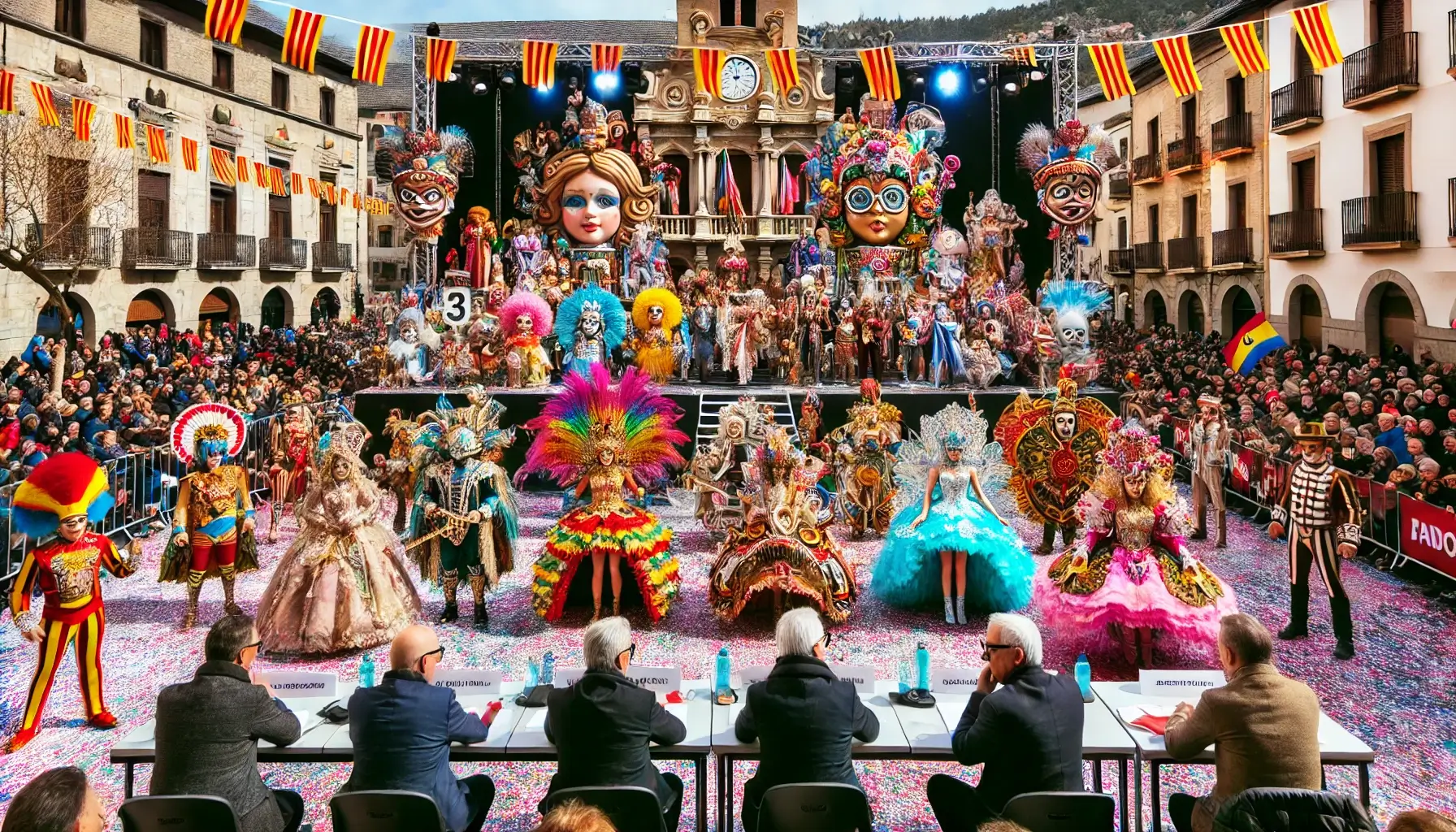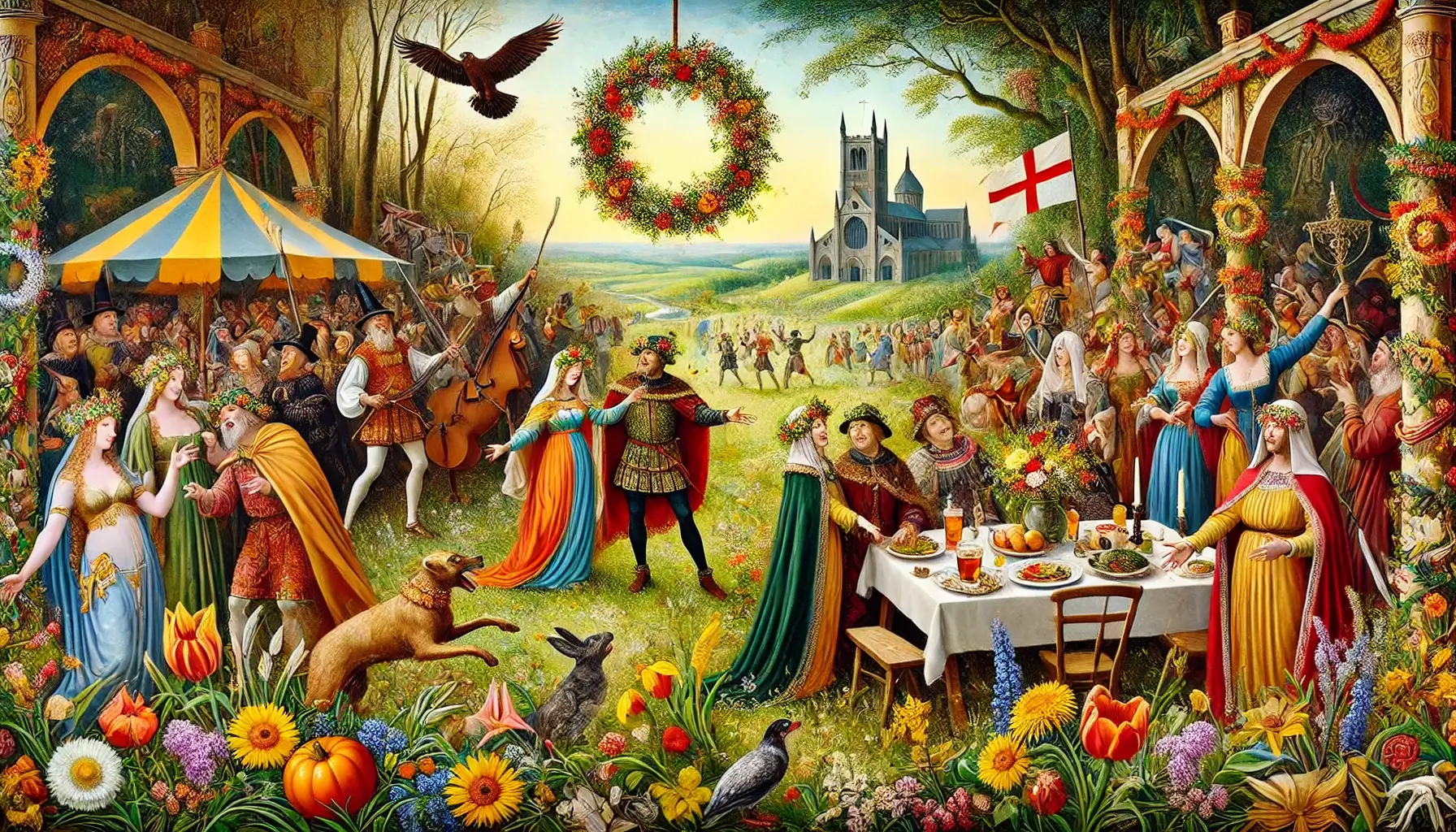Carnaval Day in Andorra
Use our holiday API to get the exact date of Carnaval Day in Andorra in every year.
Meaning, History, and Festivities

Carnaval Day in Andorra is one among the most wonderful and colorful celebrations of the year. This is a feast of costume parades, street performances, and joyful atmosphere where Andorrans enjoy preparing themselves to the rigorousness of the coming Lenten season. Like most countries with a strongetholic tradition, Andorra also celebrates this event combining religious tradition and lively entertainment.
We will discuss in this article the meaning and history of the Carnaval, how it is celebrated in Andorra, and what activities take place on that exciting holiday.
What is Carnaval Day?
It is quite clear that Carnaval, a pre-Lent festival rooted in Christian tradition, now looms as a larger cultural event characterized by indulgence, creativity, and merrymaking. Normally, it takes place on several days right preceding Ash Wednesday, in preparation for Lent, the period of fasting and penance in the Christian calendar.
But above all, Carnaval is for street parades, costumes, and community events. Therefore, both townsfolk and tourists join in for a bit of fun and revelry. These days everyone takes the liberty and the opportunity to turn into prodigiously costumed versions of themselves and indulge in a variety of festive activities.
When is Carnaval Day Celebrated?
Carnaval in Andorra usually takes place in February; however, since it is determined by Easter, this particular date changes every year. The funfest usually goes for some days and culminates in a so-called grand parade on the last day of Carnaval, the final day before Ash Wednesday.
Carnaval, Andorra's biggest festival

Parades and Costumes
Most likely the most celebrated event of the year in Andorra is the costume parades that fill the towns and cities across the country during Carnaval. People of all ages participate in these extravagant, lively, humorous, fanciful, traditional, and historical costumes.
These parades often boast floats, street performers, and musical bands, filling the streets with vibrant color and liveliness. Andorran towns like Andorra la Vella, Escaldes-Engordany, and Encamp would boast some of the most exciting activities during the Carnaval season, including the large crowds of spectators and participants.
Competitions and awards
Costumes are the main category of the celebration in Andorra. Local authorities generally organize these events awarding prizes for the most fascinating and marvelous costumes by organizing costume competitions. Competitions like these add a fun and competitive angle to the celebrations stimulating creativity and local community involvement.
Traditional Performances
And at Andorra, traditional folk dances, theatrical skits, and puppet shows are materialized into what is basically carnaval. These take place mostly at the public squares and community centers providing great fun for all ages.
Andorra's twist to Carnaval. Some towns narrate local legends and stories that make the celebration more unique.
Feasting and Pampering
Carnivals are the moments for indulgence before the fast of lent. This time of for Andorrans always spent enjoying plenty of food, which usually consists of traditional dishes, sweets and well, very rich food. This is the last benefit of this sweet-before the just-ended transition to a more regimented Lent.
Burial of the Sardine
The Burial of the Sardine, or Entierro de la Sardina, is one of the more symbolic events of Carnaval for Andorra, closing the celebrations. This marks the end of the carnival exuberance, as the sardine becomes the icon of a puppet or some symbolic object, which is "buried" in a fake funeral, as a symbol of ending the carnival season.
Activities for Families
Carnaval in Andorra is very family-friendly, especially towards children:
- Children's Workshops: Most communities organize workshops for mask-making and costume making.
- Face Paint Stations: Found in the main squares during the festivities
- Special Children's Parades: Smaller, earlier parades created for younger participants
- Shows for All the Family: Puppet theatres and circus events
Do Banks, Schools, or Museums Have Open On Carnaval Day?
Carnaval isn't really a public holiday, per se, like other religious holidays in Andorra; nevertheless, it is observed very thoroughly. Here is what would likely be expected in relation to closures:
- Banks: Open though a little earlier closing may coincide with local festivities.
- Schools: Some schools might have a shortened day or special events for the Carnaval period but are, generally, open.
- Government Offices: Normal.
- Museums and Cultural Centers: Most of them set up their special exhibits or performances, so they join the Carnaval buzz, making them good places to visit during the event.
The History of Carnaval Day

Origins of Carnaval
The origins of Carnaval stem from ancient pagan festivals celebrating spring and fertility. Nowadays, we associate it to the time spent before the pre-Lenten festivity that is destined for self-indulgence before the much somber time of Lent, which serves as a fasting period of 40 days leading to Easter, within a variety of parts of Europe.
From the Middle Ages onwards, it was established in society as self-induced celebrations with respect to Catholicism, such as Andorra, and eventually evolved into the colorful fiesta it represents today, as a combination of adoptions from both ancient customs and Christian tradition.
In Andorra, it has always been the time of common celebration, although the holiday still contains a religious meaning for preparation of Lent. In effect, it has gained much broader cultural significance for the Andorrans by celebrating creativity, letting itself loose, and enjoying a few days without care to get by that much more serious time, Lent.
Within the course of time, the Carnival, which exists in Andorra, has included traditional customs and events, but not only that in present time; it has been enlivened by going beyond the past and into the present realm of activities like themed parties, live music, and other performances for tourist and local enjoyment.
What Activities Can You Do on Carnaval Day in Andorra?
Here are the activities if you are in Andorra during the Carnaval:
- Parades: Gather together with the crowd in Andorra la Vella, Encamp, or Escaldes-Engordany to enjoy the brilliant parades.
- Costume Competitions: Get on the enjoyment part by dressing up and competing in a costume competition for all the creative souls out there.
- Enjoy Traditional Performances: You can enjoy folk dances, theatrical skits, and puppet shows to delight in Andorran tradition.
- Enjoy Local Dishes: Sample some of the traditional foods, which normally go with Carnaval sweets.
- Attend the Burial of the Sardine: On the last day of Carnaval, do not miss out on the symbolic gesture marking the end of the celebration.
Conclusion
Carnaval Day in Andorra is a joyous occasion for everyone, ranging from the creative gifts of a community to the community celebration itself. February months ago into Lent represents this merriment again in the shape of vibrant parades with colorful decorations, costume competitions, and some exuberant performances. Therefore, be it a local or visiting citizen, it offers everyone the opportunity to enjoy Andorra during this vibrant festival concerning culture and traditional celebrations fused with happiness and entendre celebrating this exciting time of year in the country.